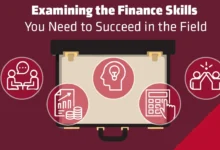Imagine you’ve just discovered the holy grail of increasing sales efficiency—sales proposal automation. By embracing this technology, you’re not only saving precious time but also customizing proposals at a speed that rivals light. You’ve got the power to integrate real-time data and market trends, ensuring that each proposal you send out is as relevant and persuasive as possible. Now, consider the impact this could have on your team’s productivity and overall success. Are you ready to transform how your sales proposals are created and increase your win rate? Let’s explore how this tool can revolutionize your process and what it takes to implement it effectively.
Understanding Sales Proposal Automation
Streamlining your sales process, sales proposal automation enables you to create precise, tailored proposals in a fraction of the time it traditionally takes. You’ve got to understand, this isn’t just about speeding up proposal creation; it’s about harnessing the power of market trends and proposal customization to strategically position your offerings. By automating, you tap into a wealth of data that aligns your proposals with the latest market demands and expectations.
Let’s break it down. Market trends are like the wind—constantly changing and evolving. By integrating these trends into your automated system, you stay ahead, ensuring that your proposals aren’t only relevant but also resonate with what your clients currently seek. This is about being proactive, not reactive.
Proposal customization, on the other hand, is where your specific magic happens. Each client feels like they’re receiving something made just for them, which significantly boosts your proposal’s impact. Your automated system can pull in data such as past purchasing history, client preferences, and engagement levels, allowing you to craft proposals that hit the mark every time.
Don’t just send out proposals; send out strategic, customized tools that win clients and shape the future of your sales success.
Benefits of Automating Sales Proposals
Having explored how sales proposal automation aligns with market trends and client customization, let’s now examine the tangible benefits this technology brings to your business. First, the range of customization options available means you can tailor each proposal to meet the specific needs of your clients. This personalized approach not only increases client satisfaction but significantly boosts your chances of closing deals.
Moreover, automating your sales proposals streamlines the entire process, cutting down on the time it takes to create each proposal. You’re not just saving hours; you’re ensuring that every proposal is sent out faster, keeping you ahead in today’s fast-paced market. With quicker responses, you can capitalize on the momentum of initial client interest.
Team collaboration is another critical area where automation makes a profound impact. By centralizing the proposal process, team members can work together seamlessly, regardless of their physical location. This unified approach improves communication, reduces errors, and enhances the overall quality of your proposals.
Key Features of Automation Tools
You’ll find that the key features of sales proposal automation tools are designed to strategically enhance your business’s efficiency and effectiveness. One of the most critical features is the integration capabilities these tools offer. Imagine seamlessly connecting your CRM software, email platforms, and even social media accounts into one centralized system. This level of integration streamlines your processes, ensuring that data flows effortlessly between systems, cutting down on manual data entry and reducing the risk of errors.
Furthermore, customization options are integral to making these tools work for you. You’re not just stuck with a one-size-fits-all solution; you can tailor the automation tools to fit your specific business needs and client requirements. From custom templates and branding options to setting specific workflow rules, these features ensure that each proposal you send out is personalized and aligned with your strategic goals.
Steps to Implement Proposal Automation
Now that you understand the key features of automation tools, let’s explore how to effectively implement proposal automation in your business. Implementing this system isn’t just a purchase; it’s a strategic upgrade to your sales process. Here’s how to dive in.
Firstly, focus on vendor selection. It’s crucial to choose a provider whose tools align with your specific business needs. Don’t just go for the most popular option; assess features, scalability, customer support, and integration capabilities. Select a vendor that offers a solution tailored to enhance your proposal efficiency and accuracy.
Next, once you’ve chosen your tool, plan the integration. Start with a pilot program involving a small team who can quickly adapt to new technology. This approach helps you understand the tool’s impact and necessary adjustments without overwhelming your entire staff.
Then, roll out comprehensive training programs. Ensure every team member is adept at using the new system. Effective training speeds up adoption and minimizes resistance by showcasing the benefits directly to your team. Highlight how this tool simplifies their workload and enhances output quality.
Overcoming Automation Challenges
While implementing proposal automation can significantly enhance your sales strategy, it’s vital to address and overcome any potential challenges head-on.
You might face human resistance, as changes in workflow and technology can be daunting for your team. It’s crucial to tackle this by demonstrating the clear benefits and providing comprehensive training. Show how automation reduces mundane tasks, allowing your team to focus on more strategic activities. This shift not only boosts productivity but also enhances job satisfaction, which can significantly reduce resistance.
Another significant hurdle is the technology costs involved. While initial expenses may seem steep, it’s important to view this as an investment in your business’s future. Strategize the rollout to maximize your return on investment swiftly. Start small, perhaps with one sales team, and scale as you begin to see the benefits. This phased approach helps manage costs effectively while building confidence in the system’s value across your organization.
Measuring Automation Success
To effectively gauge the success of your proposal automation, it’s essential to track specific metrics that reflect both efficiency gains and revenue growth. Start by identifying key automation metrics that resonate with your business goals; these might include the time saved per proposal, the increase in the number of proposals generated, and the conversion rate from proposals to actual sales. These figures will serve as your success benchmarks and help you understand the impact of automation on your sales process.
You’ll also want to look at customer response times and feedback. Has there been a noticeable improvement in how quickly and positively customers respond to your automated proposals? Faster response times and positive feedback are clear indicators that your automation system isn’t just working, but thriving.
Furthermore, analyze the cost savings associated with the reduced need for manual intervention in the proposal process. Are you saving money on labor? And more importantly, are these savings being redirected effectively to foster business growth?




